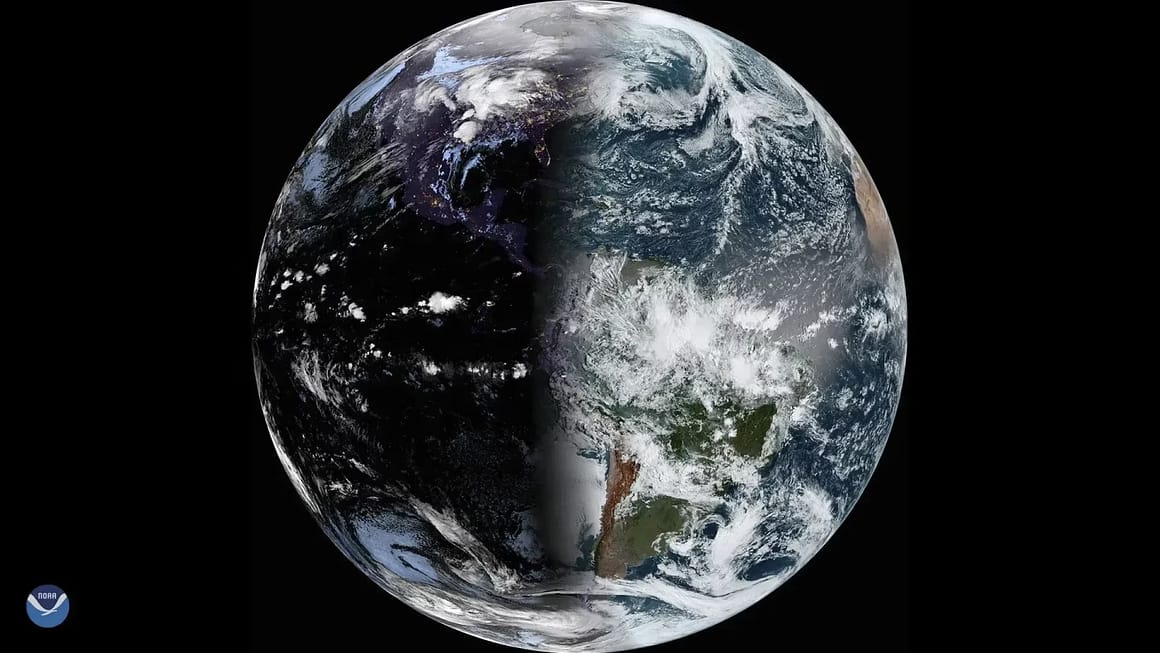Spring 2025 is almost here, bringing warmer days and longer daylight hours! The First Day of Spring 2025 officially begins with the Vernal Equinox 2025, which occurs on Thursday, March 20. This celestial event marks the transition from winter to spring in the Northern Hemisphere and from summer to autumn in the Southern Hemisphere.
During the equinox, the sun will be directly overhead at noon at the equator, creating equal day and night durations across the planet. It is one of only two times a year when both the North and South Poles experience sunlight simultaneously.
What is the Equinox?
The Earth orbits the sun at a slight tilt of about 23.5 degrees. Throughout the year, this tilt causes different parts of the Earth to receive varying amounts of sunlight, leading to the changing seasons.
However, during an equinox, the Earth’s axis aligns in such a way that both hemispheres receive an equal amount of sunlight. The word equinox comes from Latin, meaning “equal night,” as the day and night are nearly the same length worldwide.
When is the 1st Day of Spring 2025?
The 1st Day of Spring 2025 occurs on March 20, but the exact date of the Vernal Equinox can vary between March 19 and March 21 each year due to the Earth’s orbit. This event signals the official start of spring 2025, with temperatures gradually rising as the Northern Hemisphere tilts toward the sun.
How is the Equinox Celebrated Around the World?
The First Day of Spring has been celebrated in cultures worldwide for centuries. Notable traditions include:
- Nowruz (Persian New Year): Rooted in Iranian culture, Nowruz aligns with the vernal equinox and marks a time of renewal.
- Chichen Itza, Mexico: Thousands gather at the ancient Mayan site to witness the sunlight creating a shadow resembling a serpent slithering down the steps of El Castillo.
Equinox vs. Solstice: What’s the Difference?
While an equinox occurs twice a year when day and night are nearly equal, solstices mark the longest and shortest days of the year:
- Summer Solstice (June 20-22): The longest day of the year in the Northern Hemisphere, when the North Pole tilts toward the sun.
- Winter Solstice (December 20-23): The shortest day of the year, when the North Pole tilts away from the sun.
Meteorological vs. Astronomical Seasons
There are two ways to define the seasons:
- Astronomical Seasons: Based on Earth’s orbit, these seasons begin on the equinoxes and solstices.
- Meteorological Seasons: Used by meteorologists, these seasons divide the year into three-month periods:
- Spring: March 1 – May 31
- Summer: June 1 – August 31
- Fall: September 1 – November 30
- Winter: December 1 – February 28
Conclusion
As spring 2025 approaches, the First Day of Spring brings renewed energy and brighter days. The Vernal Equinox 2025 is not just an astronomical event but a global tradition marking the transition of seasons. Whether you’re celebrating Nowruz, watching shadows at Chichen Itza, or simply enjoying the change in weather, the 1st day of spring 2025 is a time for new beginnings.
Related Articles:
- Why Do the Dates of the Equinox Change?
- What Causes the Four Seasons?
- How to Celebrate the First Day of Spring



